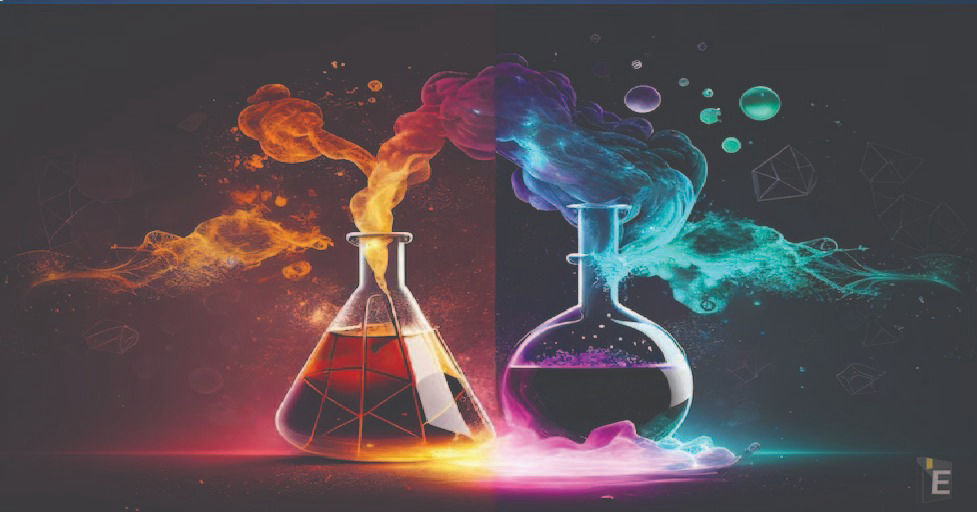Top 100 General Science Questions and Answers

What are tissues in the body made of?
(A) carbohydrates
(B) fat
(C) vitamins
(D) protein
Correct Answer : D
Explanation :
Tissues are formed from the assemblage of cells and intercellular materials in various proportions in which one component predominates. In nervous tissue as an example, nerve cells predominate while in connective tissues such as Ligaments and Tendons, intercellular fibrous materials predominate.
Provides a variety of attractive colors to flowers and seeds?
(A) Leucoplast
(B) tonoplast
(C) chromoplast
(D) None of these
Correct Answer : C
Explanation :
Protein synthesis takes place in the cell on ribosomes. Ribosomes are cellular structures composed of RNA and proteins, and they are the sites where amino acids are linked together to form proteins, following the instructions encoded in messenger RNA (mRNA) molecules. This process, called translation, is a fundamental cellular mechanism essential for the synthesis of various proteins necessary for the functioning of the cell and the organism as a whole. Ribosomes can be found both in the cytoplasm of the cell and attached to the endoplasmic reticulum in eukaryotic cells.
Agni Neerja disease is related to?
(A) Coconut
(B) orange
(C) Apple
(D) Grapes
Correct Answer : C
Explanation :
Agni Neerja disease is caused by the Yellow Vein Mosaic Virus (YUMA). It is not usually sap transmissible, but it has been transmitted by grafting under experimental conditions.
Which vegetable food contains maximum protein?
(A) Arhar
(B) peas
(C) Soybean
(D) Gram
Correct Answer : C
Explanation :
soybeans contain the highest amount of protein. Soybeans are a complete protein, meaning they provide all nine essential amino acids that the human body cannot produce on its own. Other high-protein vegetables include lentils, chickpeas, black beans, and green peas. Including a variety of these plant-based protein sources in your diet can contribute significantly to your protein intake.
Partisan reproduction is usually seen in which of the following?
(A) in litchi
(B) in grapes
(C) all kinds of fruits
(D) in common
Correct Answer : B
The edible part of coconut is?
(A) fruit wall
(B) seed coat
(C) full seed
(D) endosperm
Correct Answer : D
Explanation :
the edible part of a coconut is the endosperm. The endosperm is the inner, white, and fleshy part of the coconut seed, which is commonly consumed as food. It is often grated, dried, and used in various culinary applications or processed to extract coconut milk and oil. Coconut water, found inside young green coconuts, is also consumed as a refreshing beverage and is distinct from the endosperm.
What are the plants that never produce flowers called?
(A) angiosperms
(B) gymnosperms
(C) cryptogams
(D) None of these.
Correct Answer : C
Explanation :
The plants that never produce flowers are called "cryptogams." Cryptogams include plants such as ferns, mosses, liverworts, and algae. Unlike flowering plants (angiosperms), which reproduce through seeds enclosed within flowers, cryptogams reproduce through spores and do not produce true flowers. Cryptogams are considered more primitive in evolutionary terms compared to angiosperms, which are the most dominant group of plants on Earth today.
Which metal is found in blood?
(A) calcium
(B) sodium
(C) Iron
(D) Zinc
Correct Answer : C
Explanation :
Iron is the metal found in blood. It is an essential mineral that plays a key role in transporting oxygen from the lungs to the rest of the body and carrying carbon dioxide back to the lungs to be exhaled. Iron is a crucial component of hemoglobin, a protein in red blood cells that binds to oxygen and gives blood its red color. Without sufficient iron, the body cannot produce enough healthy red blood cells, leading to iron-deficiency anemia, a common nutritional disorder.
Which part of the human body has the longest bone?
(A) spinal cord
(B) arm
(C) rib cage
(D) thigh
Correct Answer : D
Explanation :
The longest bone in the human body is the femur, which is located in the thigh. The femur, or thigh bone, extends from the hip to the knee and is the largest and strongest bone in the human skeleton.
Sun sign vitamin is-
(A) Vitamin A
(B) Vitamin C
(C) Vitamin K
(D) Vitamin D
Correct Answer : D
Explanation :
Vitamin D is often referred to as the "sunshine vitamin" because our bodies can produce it in response to sunlight exposure. When our skin is exposed to sunlight, it synthesizes vitamin D, which is important for bone health and various other bodily functions.



